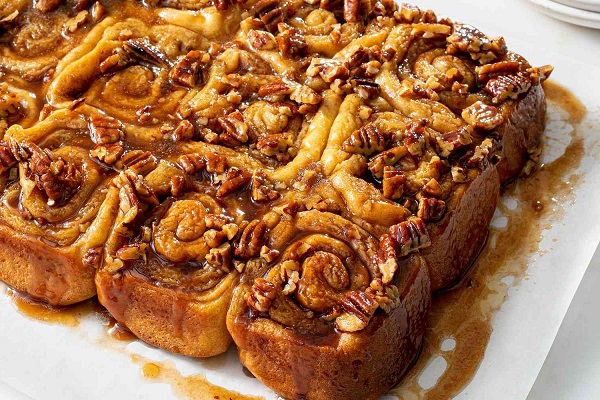Baking Basics: Essential Tips and Recipes for Perfect Pastries

When it comes to creating high-quality pastries, having a good understanding of essential tips and techniques is key. Factors such as oven temperature precision and ingredient proportions all contribute to the final outcome of your pastries. Achieving the desired flakiness in croissants or the ideal crumb texture in cakes requires attention to detail and following fundamental principles.
In this guide, we will explore the important aspects of pastry-making and share reliable recipes to help improve your baking skills.
Essential Baking Tips
For successful baking results, it's important to follow key tips that can help you achieve consistent outcomes. Begin by using ingredients at room temperature and confirming the freshness of your leavening agents like baking soda or baking powder.
Preheat the oven and position your pans on the middle rack for uniform heat distribution. Remember to rotate the pans midway through baking to ensure even browning.
To check for doneness, use a toothpick and allow your pastries to cool adequately before serving. By adhering to these guidelines, you can expect well-textured, properly risen, and visually appealing baked goods.
You can try this amazing Cinnamon Rolls recipe.
Mastering Mixing Techniques
To excel in baking, it's crucial to master fundamental mixing techniques that significantly impact the quality of pastries.
-
Creaming Method: This technique involves beating butter and sugar together to incorporate air, resulting in a tender crumb texture in cakes and cookies.
-
Cutting-in Method: By blending butter into flour until it forms coarse crumbs, the cutting-in method is essential for creating flaky pastries like pie crusts.
-
Folding Technique: Retaining air in delicate mixtures through a gentle folding motion helps achieve light and fluffy textures in pastries.
Understanding and utilizing these specific mixing methods, such as the rubbing method for achieving flaky layers in pastry dough, is essential for achieving the desired texture in baked goods.
Mastering mixing techniques is a key aspect of creating pastries that not only taste great but also look visually appealing.
Understanding Ingredients
Having mastered mixing techniques for pastries, it's important to understand key ingredients for exceptional baked goods.
Various flours like all-purpose, cake, and bread flour have different protein levels affecting pastry structure.
Butter adds flavor, while shortening and oil impact flakiness and moisture.
Brown sugar enhances moisture and flavor, powdered sugar is ideal for icings.
Eggs bind ingredients and provide richness, while leavening agents like baking powder and baking soda aid in rising.
Mixing methods such as creaming, rubbing, and folding are essential for achieving desired pastry texture.
Perfecting Baking Temperatures
Ensuring optimal baking temperatures is essential for achieving consistently well-baked pastries.
-
Preheat the oven to the specified temperature to promote uniform heat distribution.
-
Validate the oven temperature using a reliable thermometer to maintain accuracy and ensure reliable baking outcomes.
-
Adhere closely to the recommended baking durations in recipes to prevent under or overbaking your pastries.
Understanding the significance of precise baking temperatures and timings is crucial for producing flawlessly baked pastries. To confirm readiness, employ a toothpick or cake tester to assess doneness before removing the pastries from the oven.
Consistent attention to temperature control and timing will result in delectable, impeccably baked treats every time.
Troubleshooting Baking Issues
Encountering baking issues can be challenging, but understanding the reasons behind common problems can help address them effectively.
Overmixing dough can lead to a dense texture due to excessive gluten development, so it's important to mix just until ingredients are combined.
To ensure even baking, rotating the baking tray halfway through can promote consistent heat distribution.
To prevent sinking middles in pastries, ensure they're thoroughly baked before removing them from the oven.
By grasping the principles of baking science and employing correct techniques, you can troubleshoot these issues successfully.
Remember to cool baked goods on a wire rack to facilitate proper setting, which impacts both texture and flavor development.
Conclusion
Having understood the essential tips and techniques for achieving perfect pastries, it is advisable to apply these principles in your baking endeavors. Utilizing room temperature ingredients, ensuring proper preheating of the oven, and maintaining accurate mixing and baking temperatures are crucial aspects to keep in mind. Through consistent practice and attention to detail, you will gradually develop the skills to craft delectable pastries that are both flavorful and visually pleasing. Enjoy the process of baking and the satisfaction of sharing your creations with friends and family.